Estimated reading time: 8 minutes
Is your pup stretching his back legs more than usual? This behavior could be a sign of discomfort related to digestive or musculoskeletal issues. Pet Zone is here to help, providing you dog owners with possible reasons for this behavior and tips on when it might be necessary to consult a vet.
Let’s dive into understanding why Fido stretches those hind legs!
Key Takeaways
- Dogs may stretch their back legs due to abdominal pain or discomfort, musculoskeletal issues such as arthritis or hip dysplasia, digestive issues, muscle stiffness or joint pain, and trying to alleviate gas or bloating.
- It’s important to consult a vet if your dog is stretching excessively as it could be a sign of an underlying health issue.
- Some behavioral reasons for dog stretching include greeting stretches to show excitement, play bows to invite playfulness, and stretching for relaxation and comfort purposes.
- Providing appropriate toys and activities that promote stretching exercises can help keep your dog’s muscles engaged and prevent stiffness.
Possible Reasons for Why Your Dog Keeps Stretching His Back Legs
Abdominal pain or discomfort
Dogs may stretch their back legs a lot if they feel pain or discomfort in the stomach. It is their way to get rid of this bad feeling. Problems like gas build-up can make a dog’s belly hurt.
This can cause the dog to twist its body in weird ways. Stretching too much could mean that your pet has an upset stomach due to something more serious, like pancreatitis or bloat in dogs.
If your furry friend keeps stretching his back legs a lot, it is smart to take him to a veterinarian right away.
Musculoskeletal issues such as arthritis or hip dysplasia
Musculoskeletal issues can cause your dog to keep stretching. Hip dysplasia is one such issue. This genetic disease worsens with too much weight or quick growth in pups. Dogs with hip dysplasia may suffer from painful arthritis and serious lack of motion.
They have loose ligaments, soft joint coverings, and chips in their joint lining. Your vet can help greatly by giving treatment or even suggesting surgery for better comfort and movement.
Arthritis is another musculoskeletal problem that affects the joints like hips or knees of older dogs mainly. It makes the joints stiff and causes pain while moving around or standing up from a resting position which might be why you notice your dog stretching his back legs more than usual.
Muscle stiffness or joint pain
Muscle stiffness and joint pain in dogs can be indicators of underlying health issues. These problems can make it difficult for your dog to move comfortably or perform their usual activities.
Dogs may experience muscle stiffness due to stress, repetitive movements, scar tissue from previous injuries, or overuse caused by compensating for other issues. Joint pain is often associated with conditions like arthritis, bacterial encephalitis, and parasitic infestations.
If you notice that your dog is showing signs of discomfort or has difficulty moving around, it’s important to take them to a veterinarian for an evaluation. They will be able to determine the cause of the muscle stiffness or joint pain and recommend appropriate treatment options to help alleviate your dog’s discomfort and improve their quality of life.
Behavioral Reasons Why a Dog is Stretching a Lot
Dogs may stretch their back legs for various behavioral reasons, such as using a greeting stretch to show excitement or a play bow to invite playfulness. They may also stretch for relaxation and comfort purposes.
Greeting stretch
When your dog greets you with a stretch, it’s their way of showing excitement and affection. This stretching behavior is often accompanied by a wagging tail and happy face. Dogs stretch their bodies as part of their social interaction, signaling that they are ready to engage in play or receive attention from you.
It’s like saying “hello” in their own unique way! So the next time your dog stretches when they see you, feel free to return the gesture and show them some love back!
Play bow
Dogs often stretch their front legs and bow as a way to communicate and initiate play. This is known as the play bow position, and it’s a common invitation to play among dogs. When a dog wants to engage in play, they may stretch their front legs and lean down on their elbows, keeping their rear end elevated.
It’s like saying, “Hey, let’s have some fun together!” The play bow is usually seen as an invitation for other dogs or even humans to join in the playful activity. So if your dog does this stretchy pose, they are just trying to have some fun!
Relaxation/comfort
Dogs stretching their back legs can also be a sign of relaxation and comfort. Just like when we stretch to unwind and loosen up, dogs do the same. It’s a natural behavior for them to find relief from tight muscles or simply to find a cozy position.
You may notice your dog splooting, where they stretch their legs out behind them while lying down. This is often a comfortable position for dogs and helps them relax. So, if you see your furry friend stretching their back legs, it could be a good indication that they are feeling calm and at ease.
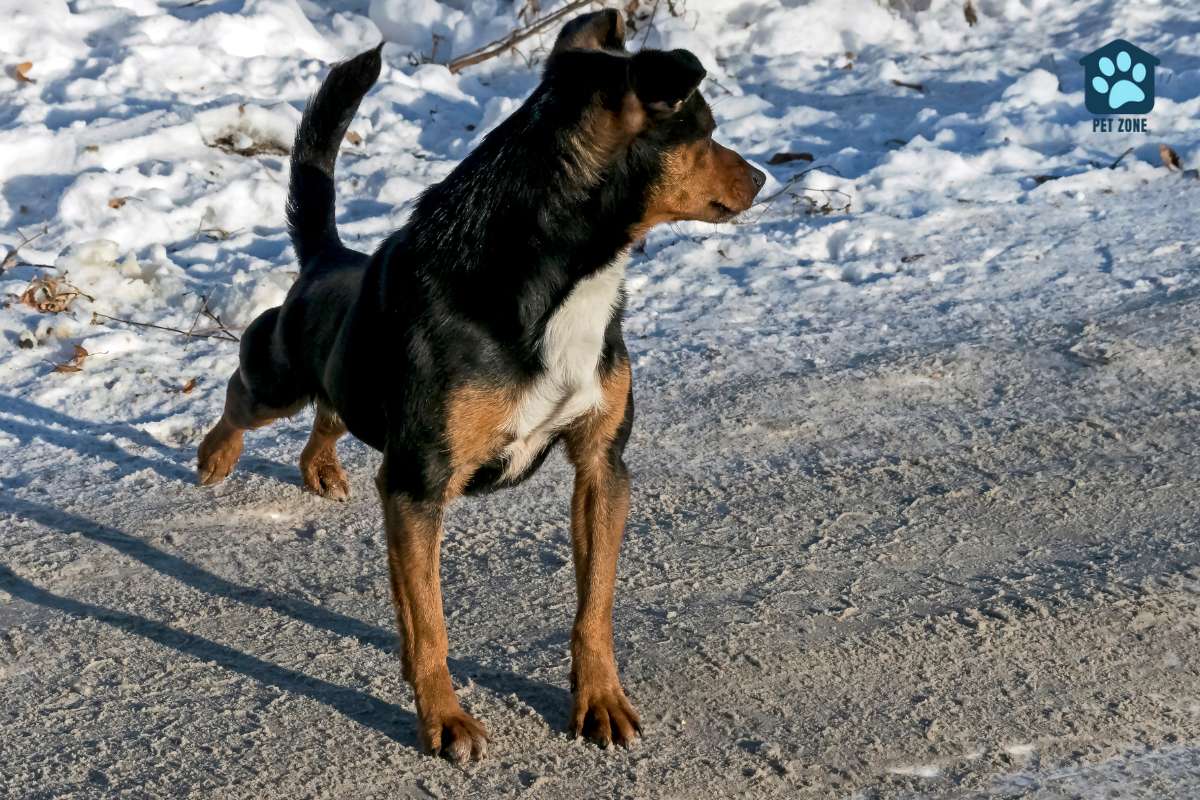
Encouraging Proper Dog Stretching
To encourage proper dog stretching, provide appropriate toys and activities that promote stretching exercises. Modify the environment to allow for optimal stretching, and utilize training techniques to help your dog control their leg stretching behavior.
Providing appropriate toys and activities
To keep your dog’s muscles engaged and prevent stiffness or tension, it’s important to provide them with appropriate toys and activities. Here are some ideas:
- Interactive toys: Choose toys that require your dog to engage their muscles, such as puzzle toys or treat-dispensing toys. This not only stimulates their mind but also gets them moving.
- Tug-of-war: Playing tug-of-war with your dog is a great way to encourage stretching and strengthen their leg muscles. Just make sure to use a sturdy rope or toy that is appropriate for their size and breed.
- Agility exercises: Set up an agility course in your backyard or at the park. This can include jumping over hurdles, going through tunnels, and weaving between poles. Not only will this get your dog moving, but it will also provide mental stimulation.
- Fetch: Playing fetch is a classic activity that can help stretch your dog’s legs and keep them active. Use a ball or Frisbee that is suitable for their size and play in a safe area.
- Walks and hikes: Regular walks and hikes provide an opportunity for your dog to stretch their legs while exploring new environments. This helps improve muscle flexibility and keeps them physically fit.
Environmental modifications for optimal stretching
To create an environment that encourages optimal stretching for your dog, consider the following:
- Provide ample space: Ensure that your dog has enough room to move around and stretch comfortably. Remove any obstacles or clutter that may hinder their movements.
- Soft surfaces: Offer soft and comfortable surfaces for your dog to stretch on, such as a plush rug or a cushioned bed. This can help minimize any discomfort or pressure on their joints while stretching.
- Warmth and comfort: Keep the temperature in your home warm and cozy, especially during colder months. A comfortable environment can make it more enticing for your dog to engage in stretching exercises.
- Regular exercise and walks: Regular exercise and walks are important for maintaining your dog’s overall health and flexibility. Engage them in activities that promote stretching, such as playing fetch or going for a brisk walk together.
- Stretching toys: Invest in stretching toys specifically designed for dogs. These toys can encourage them to engage in stretching behaviors by providing resistance or offering interactive play options.
- Supervised outdoor time: Allow your dog supervised access to safe outdoor areas where they can freely stretch their legs without any obstructions. However, ensure that the area is secure to prevent any accidents or escapes.
Training techniques for leg stretching control
Teaching your dog to control their leg stretching can be helpful in preventing injuries and promoting good manners. Here are some training techniques you can try:
- Start with a “wait” command: Teach your dog to wait before stretching their legs. Use treats or toys as rewards for patience and restraint.
- Offer an alternative behavior: Redirect your dog’s stretching impulse by teaching them an alternate behavior, such as sitting or lying down, when they feel the urge to stretch.
- Use positive reinforcement: Reward your dog for practicing self-control during stretching. Praise and reward them with treats or affection when they wait patiently or perform the desired behavior instead.
- Practice leash manners: Incorporate leg stretching control into your leash training routine. Teach your dog to walk calmly on a loose leash without pulling or lunging while allowing them opportunities to stretch appropriately.
- Provide mental stimulation: Engage your dog’s mind with interactive games and puzzle toys to help reduce the frequency of excessive stretching and promote mental relaxation instead.
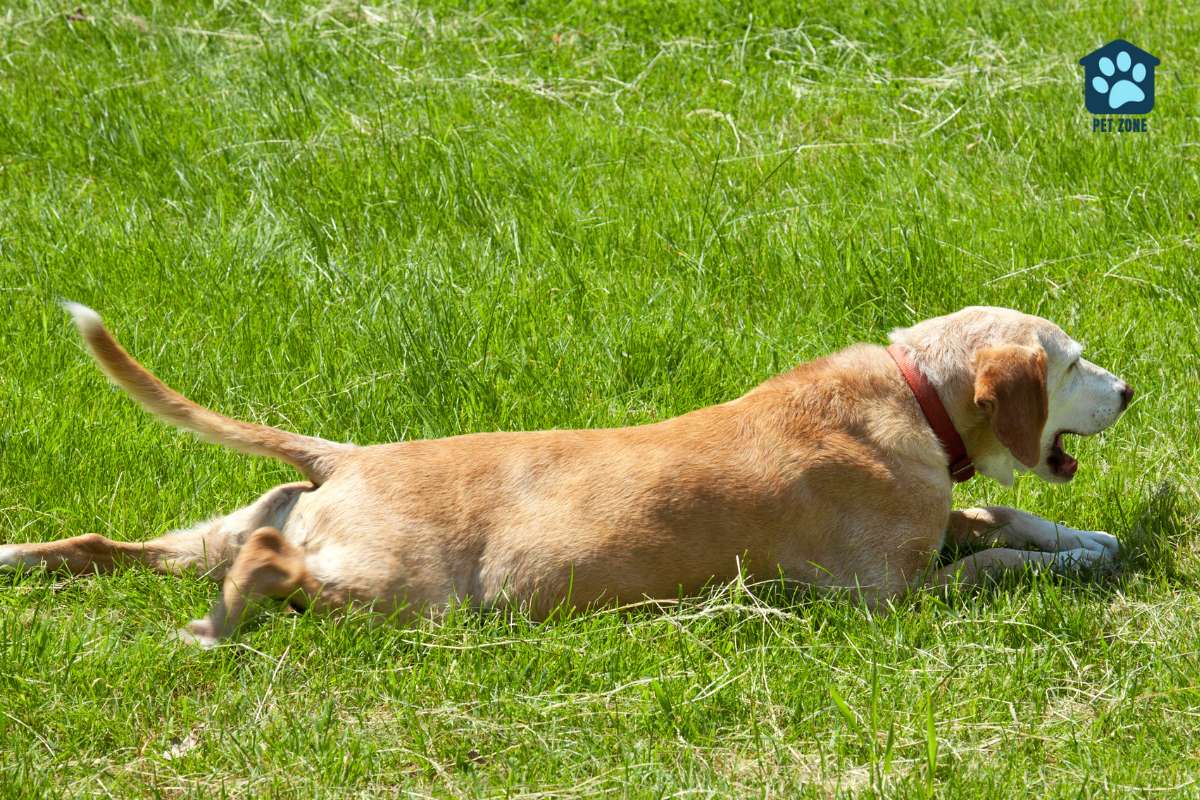
Impact on Long-Term Health and Conclusion
Regular stretching of their back legs is a normal behavior for dogs, and it can serve both physical and behavioral purposes. However, if you notice excessive or unusual stretching, it may be a sign of underlying health issues that require the attention of your veterinarian.
By understanding the reasons behind your dog’s stretching habits and providing appropriate care, you can ensure their long-term health and well-being. So, pay attention to your furry friend’s stretching behaviors and take necessary steps to keep them happy and healthy!
As an Amazon Associate I earn from qualifying purchases.
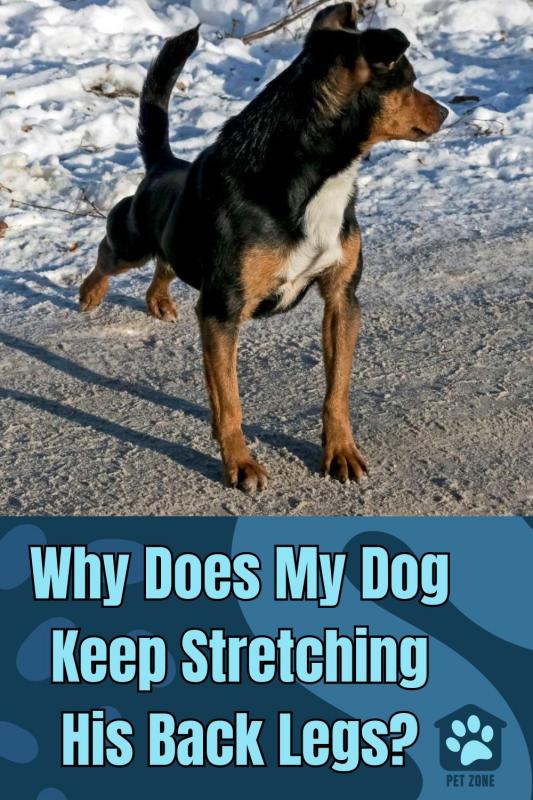


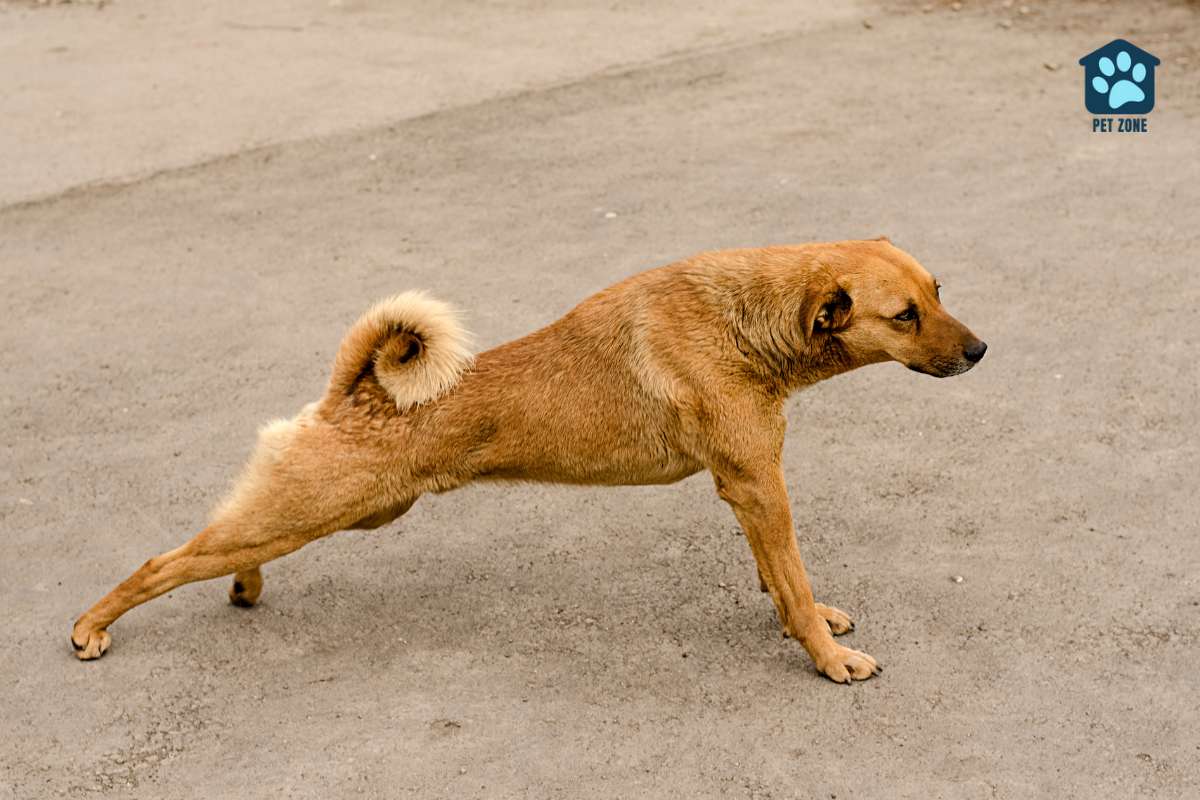
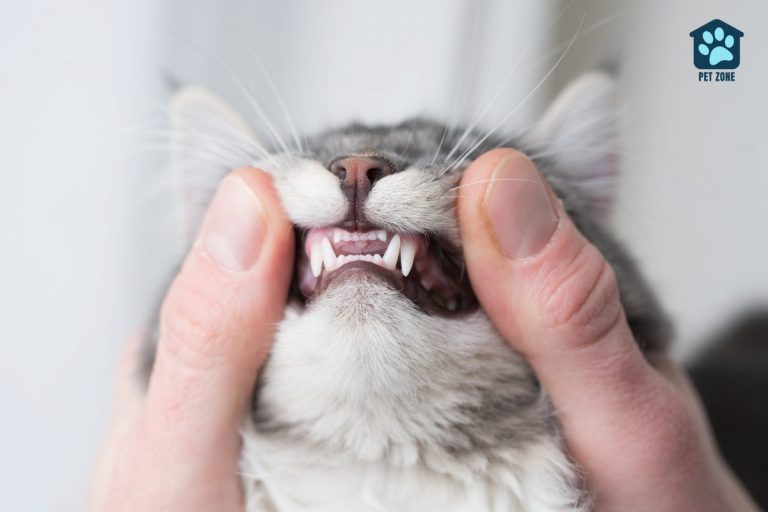

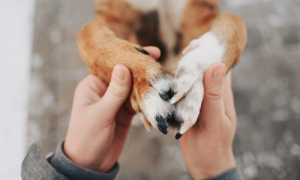


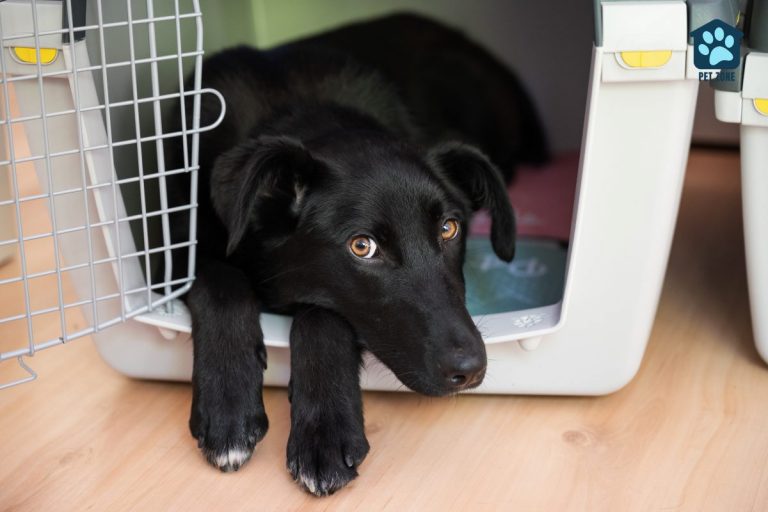
I have an older dog who’s beginning to have problems with his balance and joints. Now, I know to be watching for this as a sign of possible trouble.
My cats do this stretch quite a bit! I had no idea the why behind it.
Very interesting and helpful things to know about dog stretching. Bonus – I always wondered if there was a term for how my dog sits with her legs behind her. Now I know it’s splooting!
Interesting, I didn’t know why dogs stretch their legs so much.